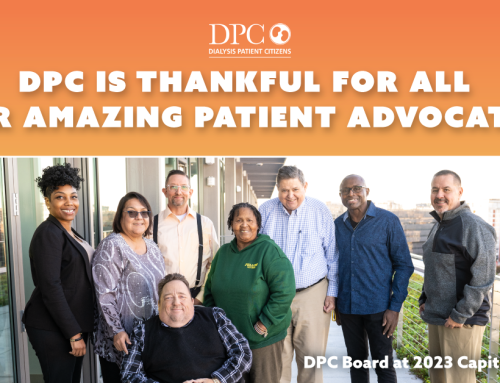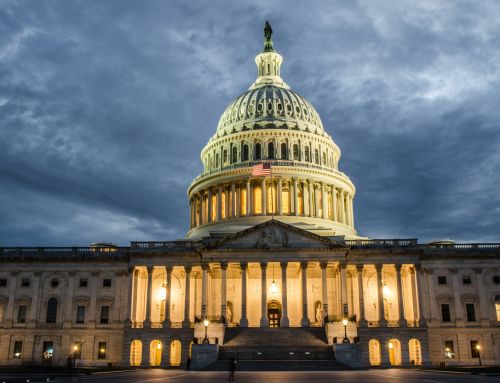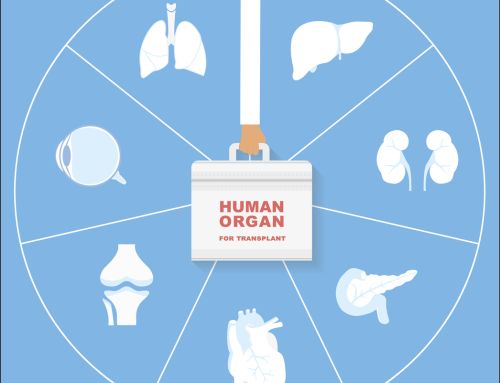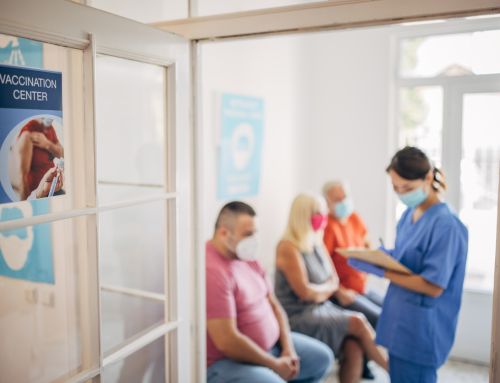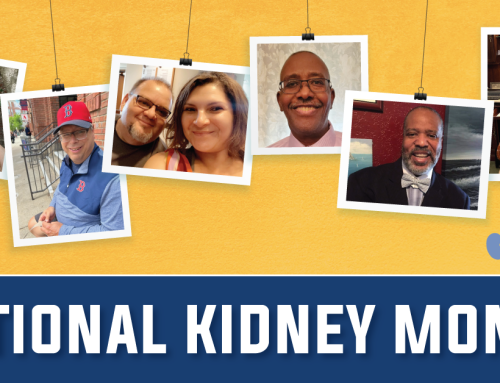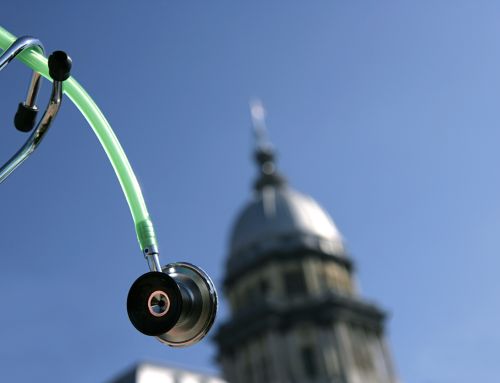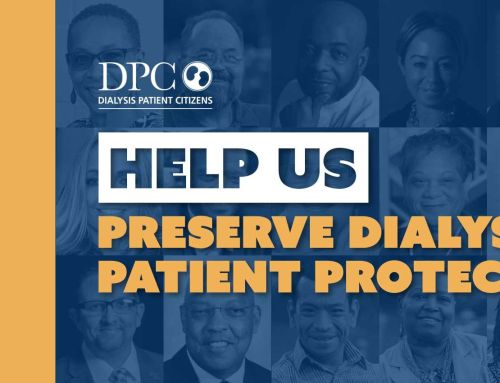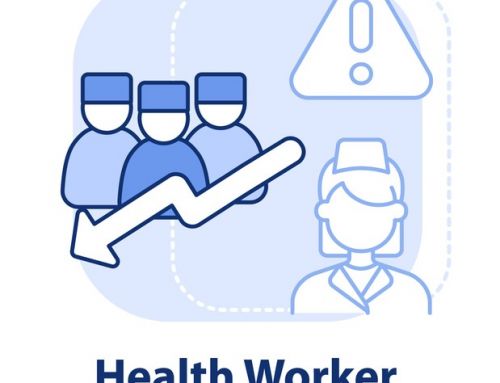In response to the Administration’s announcement to improve kidney health in America, the Centers for Medicare and Medicaid Services (CMS) proposed a rule to implement a mandatory Medicare payment model designed to increase the number of home dialysis treatments and kidney transplants, all while reducing Medicare expenditures.
The rule—referred to as the End-Stage Renal Disease (ESRD) Treatment Choices Model (ETC Model)—would measure clinician and facility performance, as well as the rate of home dialysis and kidney transplants in selected geographic regions. These calculations would result in either an increase or decrease of Medicare funding to a particular facility or clinician, essentially a reward/punishment model.
Dialysis Patient Citizens (DPC) is excited by the kidney initiatives announced by the Administration and applauds the concept of a demonstration to increase the use of transplantation and home dialysis, as proposed by this rule. However, there are certain aspects of the proposed model we disagree with that should be addressed before implementation. There are also considerations for redesign that are worth pursuing.
As a non-profit, patient-led organization, DPC works hard to improve dialysis patient quality of life by elevating the voice of patients. We strive to ensure optimal dialysis care through continual improvement of public policy. These goals were the foundation we used when evaluating this proposed model and providing feedback to CMS. Read DPC’s letter to CMS below for more information.
Seema Verma, Administrator
Centers for Medicare & Medicaid Services
200 Independence Avenue, SW
Washington, DC 20201
Re: CMS-5527-P Specialty Care Models to Improve Quality of Care and Reduce Expenditures
Dear Administrator Verma:
Dialysis Patient Citizens (DPC) writes to offer its comments on the above referenced proposed rule as it relates to the ESRD Treatment Choices (ETC) Model demonstration.
DPC’s membership, currently 32,000, is restricted to kidney disease patients and their family members. DPC is a patient-led organization. Our by-laws require that the President, Vice President and at least 51% of the Board be current dialysis patients. The non-dialysis patients serving on our Board are former dialysis patients with kidney transplants. Nearly all our volunteer board members have represented their peers on CMS technical expert panels and/or advisory committees of other health care organizations such as the National Quality Forum and Patient-Centered Outcomes Research Institute. DPC also conducts an Annual Membership Survey to ascertain patients’ experiences with their care and views on health policy issues. DPC is committed to promoting access to high-quality dialysis care for individuals with ESRD; to prevention of, delayed onset of, and safe transition to ESRD among individuals with chronic kidney disease; and access to kidney transplantation as well as to other alternatives to dialysis that may emerge.
Like other kidney stakeholders, we are excited by the initiatives announced in the President’s Executive Order. We applaud the concept of a demonstration to increase the use of transplantation and home modalities, as proposed by this rule. We also agree with the concept of catalyzing and testing a “surge” of activities in selected geographic regions that are paired with comparison regions for an evaluable demonstration design, and with rewarding providers for improvements.
However, we disagree with specific elements of the ESRD Treatment Choices (ETC) Model demonstration as proposed and urge the Agency, in consultation with stakeholders, to redesign the project. The proposed ETC is limited to testing a single intervention and provides none of CMMI’s considerable financial resources for patient care activities. As explained below, we would prefer to see a project better focused on the goals articulated by the President and the Secretary, and we offer some suggestions in that regard.
Patient Experience with and Views on Home Dialysis
In 2013, 2014, and 2015, DPC used its annual Member Surveys to explore patient experience with and views on home dialysis. Results were consistent from year to year. The bottom line is that the research identified two types of “gaps” of interest to policymakers: Gaps in the delivery system that inhibit uptake of home dialysis, and gaps in patient preferences for home versus in-center modalities. To sum up our conclusions: The “delivery system gap” needs to be addressed by CMS; while the “preference gap” must be respected by CMS to avoid restricting patients’ choices.
Exhibit 1 illustrates the gaps. We preface this discussion by noting that approximately 20% of survey respondents dialyzed at home. Exhibit 1 shows that about 21-23% of patients felt that they had never been meaningfully or actionably informed about the option to use home HD or PD. We believe this represents a delivery system failure. We presume that many if not most of this subpopulation unexpectedly “crashed into” dialysis, which would constitute an explanation, but not an excuse. Our survey findings are roughly in accord with those of Mehrotra et al who, framing their question differently, found that 66% of ESRD patients were not initially presented with peritoneal dialysis as an option, 88% were not initially presented with home hemodialysis as an option, and 74% were not initially presented with transplantation as an option.1
Exhibit 3 shows another side of the “delivery system gap”: 9-10% of respondents say they would consider home HD if their facility had training or if their doctor ordered it. Similarly, Exhibit 5 shows that 5-6% of respondents say they would consider PD if their facility had training or if their doctor ordered it.
Turning back to Exhibit 1, the patient “preference gap” is illustrated by the difference in the proportion of patients who were informed about home modalities—71-73%—and those who seriously considered home modalities, 22% and 33% for HHD and PD, respectively. This gap of 40-49% represents patients who weighed the relative advantages of home versus in-center and struck the balance in favor of in-center. Exhibits 2 and 4 display the reasons these patients reached that conclusion. Note that patient preferences regarding safety and social considerations predominate.
In sum, we feel that an expectation that 80 percent of U.S. patients would choose home dialysis is unrealistic. Resetting provider incentives to pursue such a goal invites unwelcome efforts to persuade patients to accept a modality they otherwise would not choose. The demonstration needs to be tailored to address delivery system gaps such as lack of meaningful communication of options at incidence and lack of infrastructure to support home modalities. In addition, patients’ lack of a care partner, and perhaps some concerns about safety, could potentially be addressed by staff-assisted home dialysis. But the demonstration cannot assess significant penalties that could spur providers to pressure unwilling patients to dialyze on their own.
Considerations for redesign
In a 2013 commentary, RAND Corporation researchers articulated seven criteria reflecting “best practices” in the design of pay-for-performance programs.2 In our view, the ETC as proposed is seriously deficient on two dimensions: it fails to “coordinate program design across payers” and does not “pay incentives that are sufficiently large to motivate a behavioral response.” We offer here some suggestions on how the demonstration should be redesigned; however, CMS consideration of written comments to this rule is no substitute for ongoing consultation with stakeholders and experts. We would like to see structured engagement, such as CMS sponsorship of a symposium with commissioned papers and listening sessions, and convening of a technical expert panel, to develop consensus on hypotheses to test and appropriate means of implementing those tests.
We know that PD patients are less costly to the Medicare program than HD patients; as such, the ESCO program, which allows providers to share in savings, already incentivizes providers to place patients on PD. Nevertheless, no ESCO site has succeeded in improving home uptake. We think this is near-conclusive evidence that economic incentives alone are an insufficient spur to change. Clearly there are structural factors throughout the delivery system acting as barriers to uptake. We believe that a demonstration’s goals should be to identify and break down these barriers with techniques replicable through targeted payment and delivery system reforms.
We suggest that a redesigned demo focus on a smaller number of, but also a few larger, intervention regions. The recent frightening news about the unintended consequences of the Hospital Readmission Reductions Program,3 which was rolled out nationwide, certainly cautions against interventions of this scope. As more fully detailed below, we do not believe this demonstration implicates only the 50% of patients in designated intervention regions; we think it will affect all patients.
We suggest that regions should be coextensive with the reach of other delivery system actors that influence home adoption. Because about half of ESRD patients are under 65 years of age, the cooperation of actors that pay for and deliver care to the non-elderly population is essential. Intervention regions that are congruent to the service areas of commercial insurers and Medicaid managed care organizations would be preferred. Note also that about a third of Medicare beneficiaries are in Part C managed care plans. A successful demo will require all actors pulling in the same direction—kidney care clinicians should not be asking primary care practitioners, care coordinators, and even integrated delivery systems to treat patients differently within their service areas based on whether a particular patient will be attributed to the demonstration. (Kaiser Permanente of Northern California covers numerous Hospital Referral Regions, and none of the HRRs match up with individual K-P service areas.)
The Hospital Referral Region was created by Dartmouth researchers as a unit for measuring the volume and intensity of hospital procedures in fee-for-service Medicare. The units are relevant to research on hospitals and their associated physicians but “vary in their ability to describe where patients receive hospital care” and in particular, emergency care.4 They were not designed to reflect markets for anything else, including transplantation or provision of renal therapy. As best we can tell, the proposed Rule is without precedent in using these units to define a population for accountability purposes.
We would suggest looking at the design of the 1990s Civil Justice Reform Act experiments for inspiration. The CJRA was a congressionally mandated demonstration aimed at testing techniques that might reduce costs and delays in the civil courts. The CJRA designated, among the 93 federal court districts, five “pilot” districts, ten “demonstration” districts, and ten matched “comparison” districts. The five pilot districts were given specific techniques to test, while the ten demonstration districts could choose interventions from among a large menu of options. In each district, federal judges convened an Advisory Committee of stakeholders to recommend techniques to be tested. Stakeholder involvement was important because lawyers needed to buy in, and cooperate with adversaries during implementation.
The CJRA was intended to be exploratory and agnostic as to which techniques should ultimately be deemed “solutions.” The demonstration was evaluated by the RAND Corporation, and was successful in that it did identify techniques that reduced costs and delays, which were brought to scale and are now commonly used in both federal and state courts.
Federal court districts are of varying size, ranging from statewide to cities and parts of cities, but constitute discrete communities of lawyers, judges, and frequent litigants. We like the idea of designating about 10-15 intervention regions for the ETC, ranging in size from entire states to metropolitan or non-metropolitan regions, in which stakeholders can be brought together in steering committees to coordinate efforts on transplantation and home dialysis. Viewing the regional delivery system actors who touch kidney care as communities would foster collaboration. It is important to note the crucial role of those actors who touch the patient before the incidence of kidney failure (such as primary care practitioners), and at the time that kidney failure is diagnosed; as well as the transplant centers that represent the end of the patient’s dialysis journey. And we think it would be absurd for an important White House- and Secretarial-level health initiative to be operating in, say, San Francisco, without any formalized participation from such important actors as Kaiser Permanente and the city’s hospitals.
We think that ETC needs to be exploratory and agnostic as to which techniques should ultimately be deemed “solutions.” As proposed, a single hypothesis is being tested: that a bonus-and-penalty payment adjustment to two types of providers will increase transplantation and home dialysis use. We think it is a mistake to bet everything on a single intervention covering the entire United States, for two reasons: first, we believe that the ESCO demonstration results to date have already ruled out inadequate financial incentives as a significant barrier to home dialysis; second, other, more plausible barriers merit intensive exploration. We also believe that the determination of appropriate benchmarks for home dialysis should be an end goal of explorations.
An exploratory demonstration would investigate the ability of state governments to impact the outcomes of interest, and we urge that 4 or 5 states be designated as demonstration regions, with at least 2 or 3 chosen because state officials have demonstrated an interest. States that are committed to transplantation could change organ donation defaults from opt-in to opt-out, or loosen state laws that threaten liability to deceased donors’ surviving family members. States not participating in the HCUP State Inpatient Database could free up hospital discharge data to complete report cards on of Organ Procurement Organizations performance. A state could expedite surveys and certification of home dialysis programs to expedite increased capacity. State universities’ medical centers contribute to workforce composition and could participate in preparing professionals to prescribe and administer home dialysis. Last but not least, we are concerned that state Medicaid programs are insufficiently vested in CKD care and CKD/ESRD transitions, because once a recipient’s kidneys fail, he or she becomes eligible for Medicare and is no longer the state’s concern. We hope that Medicaid programs can become engaged in this effort and are rewarded for helping to achieve good outcomes.
We suggest appointment of steering committees in intervention regions to spearhead collaborative, multi-stakeholder efforts and promulgate regional plans to increase home dialysis and transplant. These should be structured to formalize participation by all relevant delivery system actors. We would like these entities to be invited to submit grant proposals for Innovation Center funding to address specific barriers. On the transplant side, this could be funding to pay for living donors’ expenses, or for dialysis patients’ necessary dental care. On the home dialysis side, this could be funding additional payments to surgeons to place PD catheters; scholarships for nephrologists or nephrology nurses to take continuing education courses on home modalities; payments to hospitals to fund transitional care units; or staff-assisted home dialysis. Regions should also be empowered to propose and test bundled payments for urgent-start peritoneal dialysis. Grant funding could be structured as advance payments debited against savings achieved in the region. A few regions should be permitted to choose to concentrate on only one of the outcomes (home or transplants). Regions should be permitted to test whether regulatory changes might reduce discards of donor kidneys.
We also ask that the Agency revisit the question of benchmarks. The US Renal Data System map of home dialysis penetration by region indicates that home dialysis is most frequently used in the West and in sparsely-populated areas.5 We believe that this pattern is revealing of patient preferences and differing weights that patients assign to the value of home versus in-center dialysis based upon region. In densely populated areas, it is relatively easier to travel to in-center facilities, and patients tend to live in smaller dwelling units where dialysis equipment may be impractical to store—recall our survey findings that 16-21% of patients did not have room in their home for supplies. An assumption that urban patients have the same preferences about home dialysis as those in Idaho or Alaska will cause frustration among patients and, we suspect, among clinicians as well. This is especially worrisome given the ongoing crisis in housing affordability in many urban areas,6 where we may actually need to adjust our expectations downward. CMMI staff should be closely monitoring housing affordability issues during development and implementation of ETC, especially in California.
There also appears to be higher home uptake among westerners and in regions with a high proportion of Scots-Irish ancestry. These are two demographic groups with reputations for “individualism” and “self-reliance,” which may impact willingness to or perhaps even a desire to take primary responsibility for their dialysis. Again, we caution against benchmarks that may mistakenly impute cultural attributes of unique subpopulations to other subpopulations.
We also urge that benchmarks be a factor in choosing regions for interventions. It appears to us from the USRDS maps that there are small areas where home dialysis is under-used relative to nearby regions having similar characteristics. We think there would be value to bringing resources to these regions; to explore why home modalities appear to be undersubscribed; and to devise creative local solutions. Designating high-penetration regions for interventions would be to carry coals to Newcastle; there are limited resources available and they should be directed to places where we think delivery system characteristics are countering patients’ likely preferences.
Problems with ETC as designed
The ETC demonstration utilizes two elements that appear to have been adapted from previous hospital demonstrations, but with the kidney-related metrics and provider involvement substituted in. We refer here to the Premier Hospital Quality Incentive Demonstration and the Comprehensive Care for Joint Replacement demo. The demonstration does not appear to have been designed to specifically address the milieu that surrounds kidney patients and the unique and multifarious barriers to transplantation and home dialysis.
1. Random geographic assignment is inappropriate for this model.
The random, geographic-based assignment into intervention and control regions has been borrowed from the Comprehensive Care for Joint Replacement demo. This was an appropriate design for joint replacement episode payments. However, there are two significant differences in circumstances between joint replacement and kidney care.
First, CJR succeeded because it was meant to reduce utilization of a plentiful resource, post-acute care. The ETC demo is intended to increase utilization of resources that are always scarce (donor kidneys) and often scarce (e.g., doctors and nurses who know home dialysis, surgeons willing to place PD catheters, PD fluid).
Second, CJR affected providers that are local: hospitals. This demo affects providers that are larger, and in many cases, national in scale, including for-profit large dialysis organizations. The principal advantage that dialysis chains have in the marketplace is their scale and their ability to create bureaucracies (in the Weberian sense) that support chain-wide quality and efficiency activities. By creating different payment incentives in different regions, ETC discourages chains from making uniform, systemwide changes to policies and procedures and thereby fails to marshal the chains’ greatest strength.
Instead, the design invites chains to game the demonstration by reallocating resources to achieve benchmarks in intervention regions. In larger metropolitan areas, such as greater Chicago, the regions in this demo are in many cases small enough that a dialysis chain could redeploy resources from a region excluded from the demo, say the Chicago Hospital Referral Region, a few miles over to an adjacent region included in the demo, say Oak Park HRR or Evanston HRR. Similarly, larger nephrology practices would be incented to redeploy nephrologists who are champions of home modalities into intervention HRRs. One large dialysis organization had already announced a nationwide effort to increase home dialysis uptake and we are concerned that ETC’s divisions of the country into a checkerboard pattern could mince this campaign.
The biggest concern with gaming here is in the allocation of deceased donor kidneys. Dialysis patients are already at the mercy of geographic vagaries in the effectiveness of Organ Procurement Organizations in obtaining kidneys and geographic disparities in kidney allocation. Large dialysis organizations will be incented to re-assign their social workers who are most effective in transplant referrals from control regions to intervention regions. This adds yet another layer of randomness and unfairness in transplantation based solely on where the patient lives.
The economic analysis in the Rule does not project anything more than a miniscule increase in transplants because of the limited number of deceased donor organs. It projects an additional 500 living donor transplants each year due to increased education. But with the limited number of kidneys available, what would happen if this model works as it’s supposed to is more transplants from the 50% of hospital regions assigned to the model would displace transplants from the 50% of regions not assigned to the model. Even if, as we hope, the Organ Procurement Organization reforms being implemented concurrently result in more donor kidneys, they could end up going to patients who happen to be assigned to this model with no increase for those not assigned to it.
A demonstration that uses kidney transplantation as a metric must be able to harness some plausible means of increasing the overall number of transplants, or it will offer patients false hopes. As we explained above, we think this may be possible through alterations of the design.
2. “Negative sum” payment adjustments are inappropriate.
The payment adjustments in the ETC recall those in the very first pay-for-performance pilot, the Premier demonstration that was implemented in 2003. A decade and a half later, the Premier bonus-and-penalty payment methodology looks crude and unsophisticated next to the more modern payment reforms currently being implemented by CMS. Parenthetically, we observe that evaluations of the Premier demo found it did not result in improved patient outcomes.7 Of course, payment adjustment programs, such as Hospital Value-Based Purchasing and the ESRD Quality Incentive Program, remain on the books even as medical homes, bundled payments, accountable care organizations, and ESCOs have moved forward. But we understand Congress’ preference, as manifested in the MACRA Quality Payment Program, is that risk-based alternative payment models should supersede payment modifiers: MACRA awarded a 5% bonus to physicians who take on risk through Alternative Payment Models, and the MIPS program of payment adjustments was clearly intended as a secondary, fallback program for doctors unable to participate in APMs.
APMs that hold providers accountable for the total cost of care are potential “win-win” outcomes for both CMS and providers when the provider succeeds in generating sufficient savings. Payment adjustments such as the HVBP are zero-sum outcomes in that monies are redistributed from low-performers to high-performers. Of great concern here is that the ETC is structured as a negative-sum outcome for providers overall, with a $169 million projected cut in expenditures. We are aware of only one other quality program designed to produce a net payment reduction for providers—the ESRD QIP. In other words, dialysis patients are being asked to bear reduced support for their care from not one but two programs, one layered upon the other. With commercial insurance coverage for dialysis currently under attack by insurers, employers, and a powerful labor union, the generous access to dialysis that patients now enjoy is under severe threat. The cuts anticipated in this demonstration are gratuitous and inappropriate.
As the RAND commentators noted, payment incentives must be “sufficiently large to motivate a behavioral response.” The bonuses to be awarded here (which will be more than offset by reductions) are too small to warrant the investments in infrastructure needed to overcome logistical barriers to home dialysis use. It is hard to imagine even the largest dialysis organization issuing side payments to hospitals and surgeons, hiring personnel for staff-assisted home dialysis, or paying for continuing education for clinicians –assuming any of this would be lawful—in pursuit of such small and uncertain rewards. We think a shared savings model is necessary, though not sufficient, to incentivize the investments required for this to succeed.
A shared savings design would also deter inappropriate placement on home dialysis of patients who are not good candidates. As the Rule notes, the ETC design poses “a risk of inappropriate steering of ESRD Beneficiaries who are unsuitable for home dialysis” that could manifest itself in “increased patient hospitalization, infection, or incidence of peritonitis.” The penalties contemplated by the Rule do not impose the costs of such complications on providers, further jeopardizing patient choice.
Conclusion
Let us be clear here: if this project is worth doing, it is worth investing money on at the front end, and it is worth thorough consultations with experts and stakeholders across the continuum of care to ensure that all potential avenues of increasing transplants and home dialysis are considered and incorporated into this project. There is strong reason to believe that redirecting appropriate ESRD patients from in-center dialysis to PD will save money for Medicare. There is also strong reason to believe that dialysis clinics and nephrologists cannot accomplish this on their own. The discussion above floats a dozen distinct interventions that we think are worthy of consideration (see Exhibit 6); none of them, unfortunately, are likely be tested under this design. While we would not object to the ETC design as proposed in the Rule being tested in a small number of regions if the Agency is committed to it, we do not expect such an intervention to achieve successful results. If the proposed ETC design is implemented, it will need many, many adjustments to avoid causing harm.
The interest in this project at the highest levels of government makes this a once-in-a-lifetime opportunity to improve kidney care that must not be squandered. We recall that Secretary Sebelius’ strong personal interest in marshaling state governments to undertake payment and delivery system reforms resulted in a $1 billion commitment to the State Innovation Models. While we don’t expect an investment of that magnitude here, we certainly hope that Secretary Azar has been briefed on options for using the Innovation Center’s endowment to fund direct patient care as part of this project. As a patient organization, we strongly prefer that a preponderance of CMMI funds be used for patient care activities and not for contractors.
Thank you for your consideration of our comments and concerns. If you have any questions or would like additional information, please do not hesitate to contact me or our Government Affairs Director Jackson Williams.
Respectfully submitted,
Hrant Jamgochian, J.D., LL.M.
Chief Executive Officer








